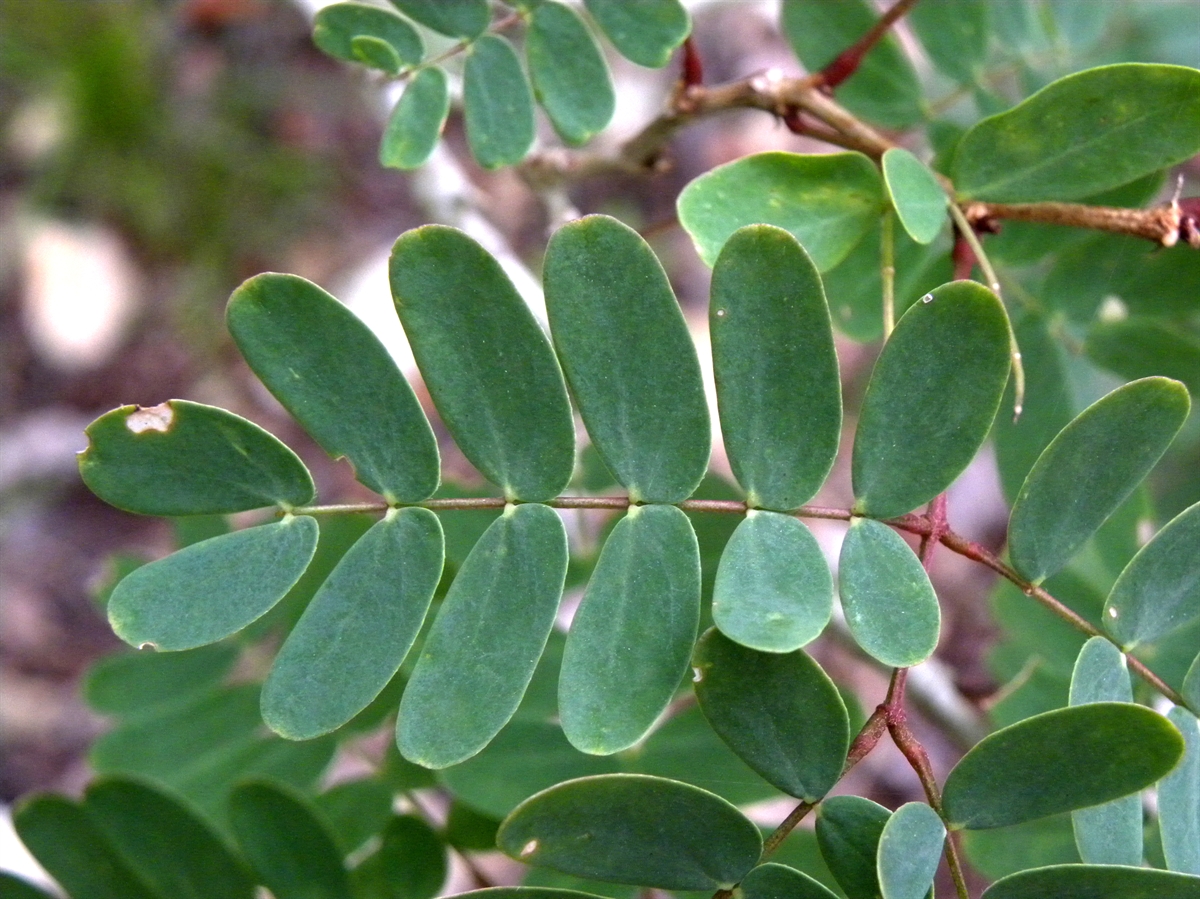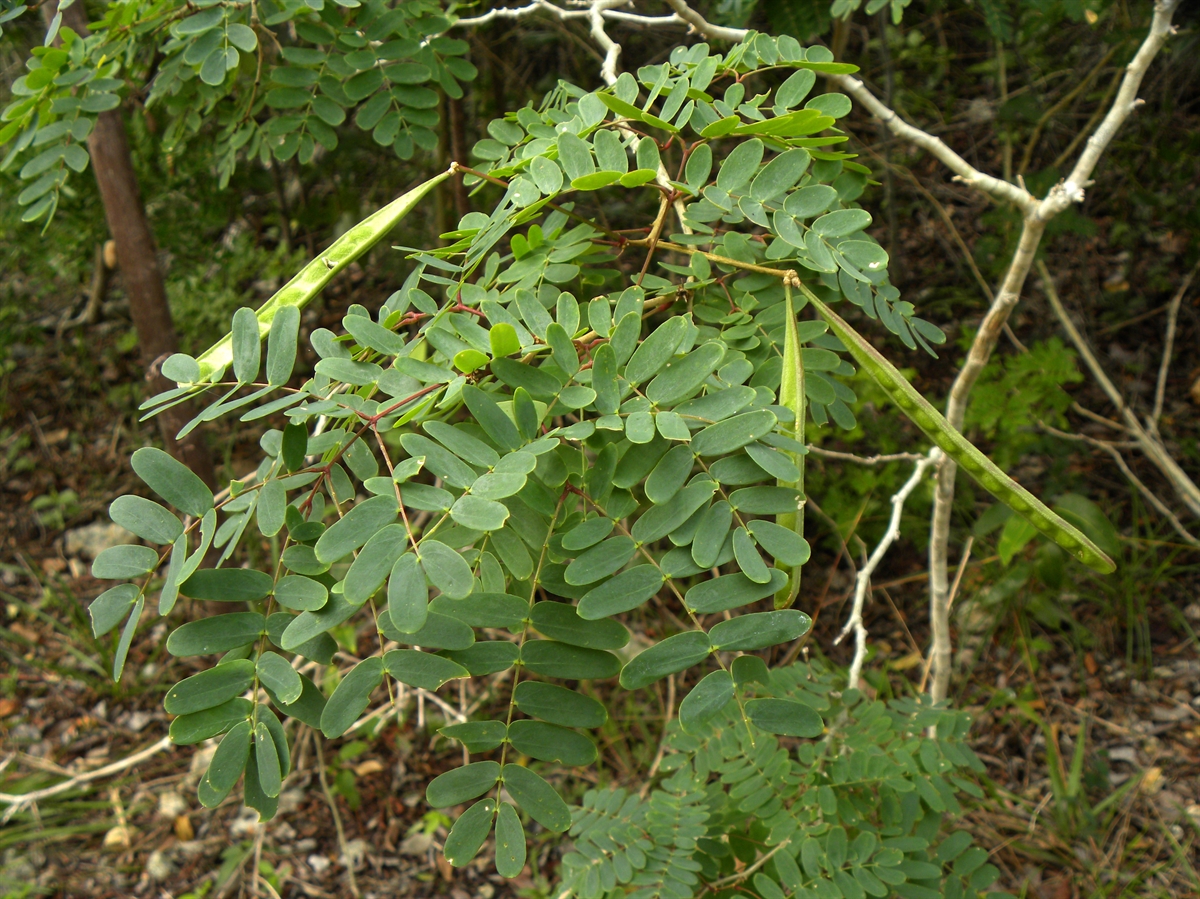Habit: Zapoteca formosa grows as a shrub to 3 meters in height. The bipinnately compound leaves are arranged alternately, to 15 cm long with pinnae in 2-3 pairs. The leaflets are up to 11 pairs, oblong to obovate, with a rounded leaf apex and entire margin.
The complete, perfect, actinomorphic flowers are in arranged in powder-puff ball heads. The calyx has 5 fused sepals forming a tube. The corolla has 5 greenish fused petals forming a tube twice the length of the calyx. There are numerous white stamens that are 7-10 times the length of the corolla. The ovary is superior with a single locule. The fruit is a legume that turns brown at maturity and is elastically dehiscent.
Habitat: Zapoteca formosa grows in Dry Broadleaf Evergreen Formation –Woodlands/Shrublands (scrublands), Pine Woodlands, and along the edges of Human Altered environments (fields, yards).
Distribution: Zapoteca formosa occurs on almost every island grouping within the Lucayan Archipelago, Cuba, Mexico, Central and South America.
Medicinal/Cultural/Economic usage: Zapoteca formosa is not known to be used medicinally in the Lucayan Archipelago.


